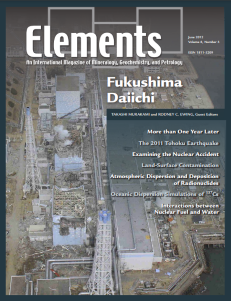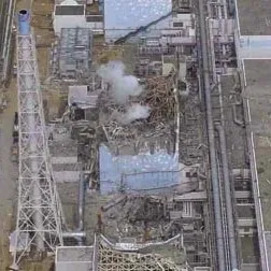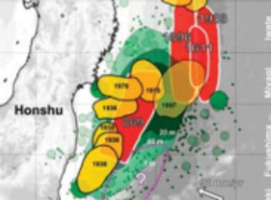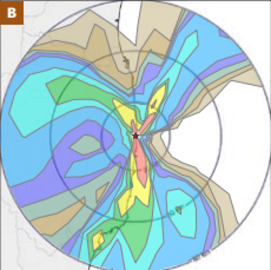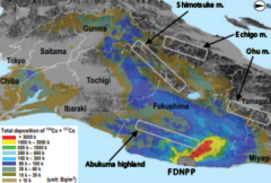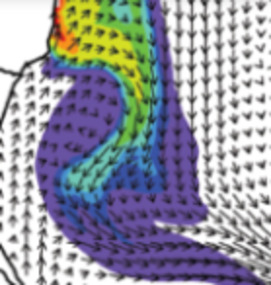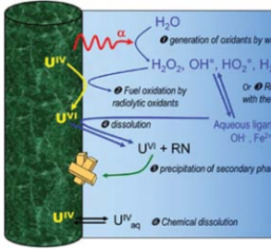
Fukushima Daiichi
Takashi Murakami and Rodney C. Ewing – Guest Editors
Table of Contents
On march 11, 2011, an earthquake and tsunami hit Japan, killing more than 20,000 persons, displacing tens of thousands, and causing havoc in the infra structure and economy of the country. In the aftermath of this tragedy, the cooling systems of three of the operating reactors at the Fukushima Dai ichi nuclear power station failed and meltdown of the reactor cores occurred. Over the following days, a series of hydrogen gas explosions took place. radionuclides (mainly 131 I and 137Cs) were released to the atmosphere and transported over many tens of kilometers from the site, contaminating soil and water. seawater was used to cool the damaged reactor cores, and water contaminated with radio activity was released to the ocean. Considerable amounts of used fuel were stored in nearby pools, and with the loss of water, the pools contributed to the release of radioactivity. One year after the tragedy at Fukushima, this issue of Elements provides a summary of what is known about the environmental impact of this nuclear accident.
- Fukushima Daiichi More Than One Year Later
- The 2011 Tohoku Earthquake
- Examining the Nuclear Accident at Fukushima Daiichi
- Atmospheric Dispersion and Deposition of Radionuclides from the Fukushima Daiichi Nuclear Power Plant Accident
- Land-Surface Contamination by Radionuclides from the Fukushima Daiichi Nuclear Power Plant Accident
- Oceanic Dispersion Simulations of 137Cs Released from the Fukushima Daiichi Nuclear Power Plant
- Interactions between Nuclear Fuel and Water at the Fukushima Daiichi Reactors
AHF Analysentechnik
Bruker
CAMECA
CrystalMaker
Excalibur Mineral Corporation
FEI
Geochemical Transactions
Geological Society of London
IMA 2014
IsoPrime
McCrone Microscope and Accessories
Geochemist’s Workbench
Rigaku
Savillex
SPECTRO
v8n4 GRANITIC PEGMATITES: SCIENTIFIC WONDERS AND ECONOMIC BONANZAS
Guest Editors: David london (University of Oklahoma) and Daniel J. Kontak (Laurentian University)
Nothing that geoscientists learn as students prepares them for interpreting rock textures as complex as those found in pegmatites. Understanding the textures and mineral zonation of granitic pegmatites is tantamount to understanding the fundamental process of crystallization. It is a challenge to our ability to discern, beyond reasonable doubt, what is igneous and what is hydrothermal. this is the context that has drawn many professional geoscientists to the study of pegmatites for all or part of their careers. In addition, granitic pegmatites are important to our society as sources of raw materials for glasses and ceramics, silicon for microprocessors, and specialty metals including Li, Cs, Be, nb, ta, sn, ree, and U. a very few pegmatites provide some of the most highly prized mineral specimens and colored gems found in national museums and personal collections around the world. no other rock type presents such a diversity of economic commodities in such concentrated fashion.
- Granitic Pegmatites: Scientific Wonders and Economic Bonanzas David London and Daniel J. Kontak
- The Pegmatite Puzzle David London and George B. Morgan VI
- Granitic Pegmatites: Storehouses of Industrial Minerals Alexander S. Glover, William Z. Rogers, and James E. Barton
- Granitic Pegmatites as Sources of Strategic Metals Robert L. Linnen, Marieke Van Lichtervelde, and Petr Cˇerný
- Granitic Pegmatites as Sources of Colored Gemstones William B. Simmons, Federico Pezzotta, James E. Shigley, and Hartmut Beurlen
- Granitic Pegmatites as Reflections of Their Sources Petr Cerný, ˇ David London, and Milan Novák
- Impact! (February 2012)
- Minerals, Microbes, and Remediations (April 2012)
- Fukushima Daiichi (June 2012)
- Granitic Pegmatites (August 2012)
- Rare Earth Elements (October 2012)
- Urban Geochemistry (December 2012)
Download 2012 Thematic Preview


